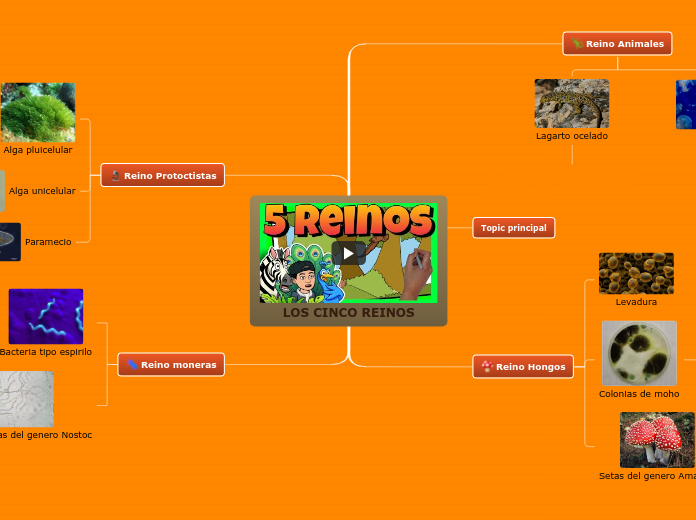av Miguel Sarmiento Valdes 3 år siden
180
LOS CINCO REINOS
El texto trata sobre los cinco reinos de seres vivos, detallando características y ejemplos de cada uno. El reino de los hongos incluye mohos y levaduras, ambos heterótrofos y eucariotas, que pueden ser unicelulares o pluricelulares y carecen de tejidos.









